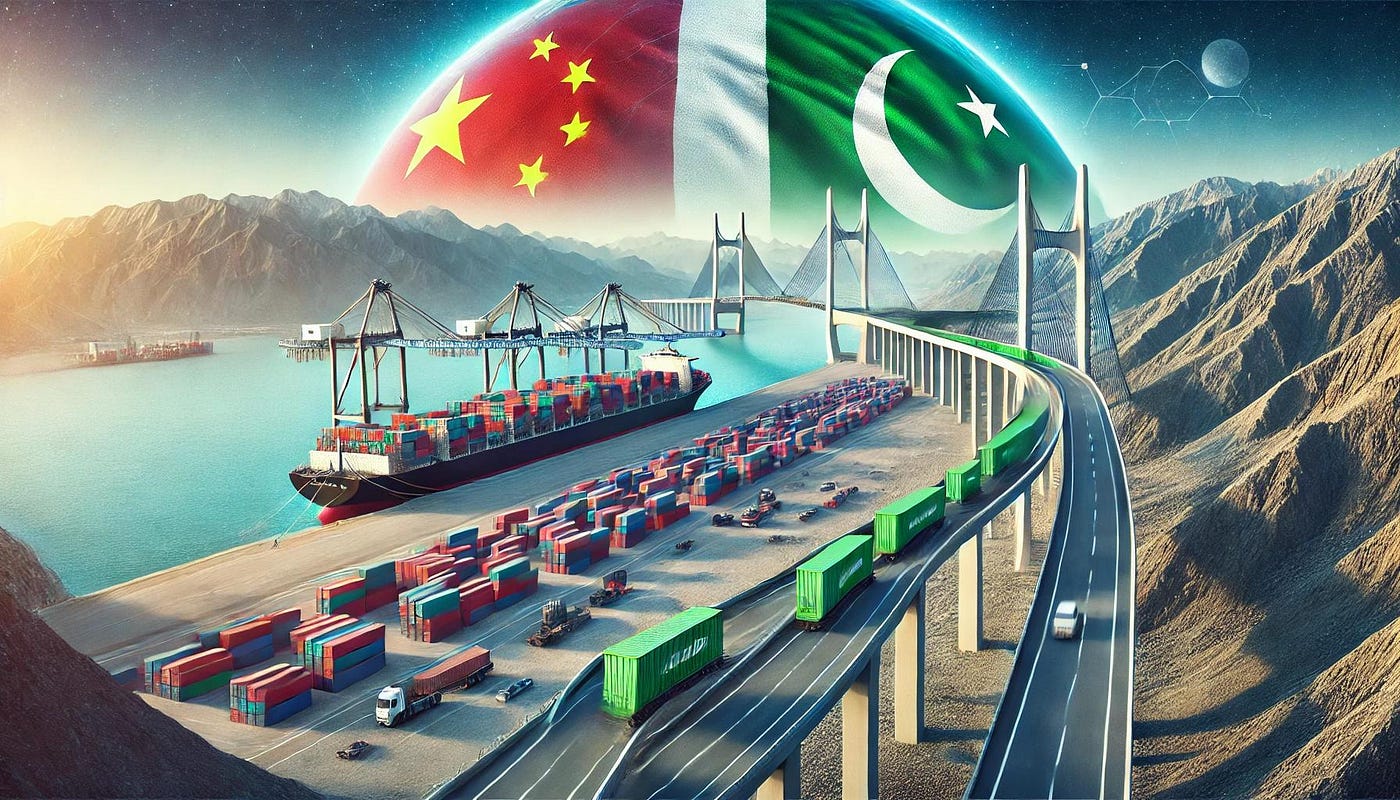On July 24, 2025, India drew a decisive red line in South Asian geopolitics. The Indian government announced that any attempt to expand the China–Pakistan Economic Corridor (CPEC)—a flagship project under Beijing’s Belt and Road Initiative (BRI)—through Xinjiang or Pakistan-occupied Kashmir (PoK) is “unacceptable.” This strong language is more than diplomatic signaling; it reflects deep-rooted concerns over sovereignty, regional security, and the strategic trajectory of infrastructure diplomacy in Asia. Learn about India’s call CPEC expansion via Xinjiang and PoK “unacceptable,” raising geopolitical tensions around China’s BRI. Explore economic impacts, security risks
India’s rejection comes at a time when China is pushing aggressively to extend its BRI footprint beyond conventional routes, incorporating energy pipelines, digital corridors, and security linkages. For Pakistan, CPEC has been hailed as an economic lifeline since its launch in 2015. For China, it’s the crown jewel of the BRI—a $62 billion investment corridor connecting western China to the Arabian Sea through Gwadar Port.
But for India, CPEC has always been problematic because a significant portion runs through territory it claims as its own. The July 2025 statement, therefore, was not just a routine protest—it was a calibrated reminder that sovereignty disputes will remain the Achilles’ heel of transnational connectivity projects in South Asia.
This blog explores the strategic, economic, and geopolitical implications of India’s move, its timing, and its impact on the future of BRI projects in contested regions. We’ll analyze the economic stakes, regional sensitivities, and supply chain considerations, and conclude with expert insights from Mattias Knutsson, a global procurement strategist, on what this means for businesses operating across these volatile corridors.
The China–Pakistan Economic Corridor: A Strategic Primer
CPEC is not just an infrastructure program—it’s an integrated economic vision. Initially announced in 2015, CPEC aims to develop transportation, energy, and industrial hubs stretching from Kashgar in Xinjiang to Gwadar Port on Pakistan’s Arabian Sea coast. The project’s total value has grown from $46 billion at inception to over $62 billion in 2025, covering:
- Highways and rail lines: Over 3,000 kilometers of roads connecting northern Pakistan to Gwadar.
- Energy projects: Coal, hydro, and solar plants adding over 17 GW of capacity to Pakistan’s grid.
- Special Economic Zones (SEZs): Industrial hubs intended to attract foreign manufacturing investment.
For Beijing, CPEC provides a strategic shortcut: reducing reliance on the Strait of Malacca by creating an overland trade route to the Indian Ocean. For Islamabad, it promises infrastructure modernization and job creation—critical for a nation battling fiscal instability and energy shortages.
Why India’s Opposition Is Unwavering
India’s objections are rooted in a single, non-negotiable principle: sovereignty. Large portions of CPEC run through Gilgit-Baltistan, a region India claims as part of the former princely state of Jammu and Kashmir. Any expansion into PoK, therefore, amounts to what New Delhi sees as an infringement of territorial integrity.
This opposition is not new. India has boycotted BRI forums since 2017 and publicly criticized CPEC in multiple international fora, including the UN and G20. However, the July 2025 statement is notable for its timing and tone:
- Timing: It comes amid China’s renewed push to expand CPEC into energy and digital infrastructure, possibly linking it with Central Asian corridors through Xinjiang.
- Tone: India’s language—calling the expansion “unacceptable”—signals less diplomatic ambiguity and more strategic resolve, consistent with its Act East and Indo-Pacific security policies.
The Broader CPEC Context: BRI Expansion and Strategic Chokepoints
China’s Belt and Road Initiative has invested over $1 trillion in global infrastructure since 2013, spanning 150+ countries. While BRI projects promise connectivity and economic growth, they also trigger sovereignty sensitivities and debt sustainability concerns. South Asia is particularly complex:
- Nepal, Sri Lanka, and Bangladesh have embraced BRI with varying degrees of enthusiasm.
- India, however, has stayed out, citing lack of transparency and disregard for territorial integrity.
The push to integrate Xinjiang into BRI expansion intersects with China’s domestic priority to stabilize its western frontier and secure alternative trade routes amid U.S.-China trade tensions. This makes India’s resistance not only a bilateral issue but a geostrategic flashpoint in the Indo-Pacific rivalry.
Economic Stakes: Who Gains and Who Risks Losing?
For Pakistan
CPEC remains central to Pakistan’s economic revival strategy. The corridor accounts for over 20% of Pakistan’s foreign direct investment inflows and employs tens of thousands of workers. Pakistan hopes that expansion into digital and logistics sectors will accelerate GDP growth, currently struggling at 2.8% in 2025 amid inflationary pressures.
For China
CPEC is critical for China’s energy security strategy. Currently, over 80% of China’s oil imports pass through the Strait of Malacca. Gwadar provides a backdoor route, reducing transit time and vulnerability to maritime blockades.
For India
The stakes are strategic, not economic. India views CPEC as a dual-use infrastructure network that could facilitate Chinese military logistics. This perception dovetails with India’s growing defense cooperation with the U.S., Japan, and Australia under the Quad framework.
Regional Geopolitics: A Zero-Sum Game?
India’s stance on CPEC resonates with its broader China containment strategy, which includes:
- Strengthening border infrastructure in Ladakh and Arunachal Pradesh.
- Expanding maritime partnerships in the Indian Ocean to counter Chinese influence at Gwadar and Hambantota.
- Building alternative connectivity platforms like IMEC (India-Middle East-Europe Corridor) announced at the 2023 G20 summit.
China, for its part, continues to court South Asian neighbors through infrastructure diplomacy, betting that economic dependency will translate into political leverage.
Security Risks Along the Corridor
Beyond diplomatic tensions, CPEC faces operational risks:
- Militant attacks: Multiple assaults on Chinese engineers and assets in Balochistan raise concerns about project security.
- Debt distress: Pakistan’s external debt hit $131 billion in 2025, forcing it to seek another IMF bailout. Critics argue that BRI loans exacerbate vulnerability.
- Political instability: Frequent changes in Pakistan’s leadership complicate policy continuity.
India’s opposition adds another layer: investor uncertainty. Global firms considering entry into CPEC-linked projects must weigh legal disputes, sanctions risk, and reputational exposure.
Trade and Supply Chain Implications
CPEC is envisioned as a trade artery linking China, Central Asia, and the Middle East, potentially reshaping supply chain routes. However, India’s rejection means South Asia’s largest economy remains outside the BRI framework, reducing regional integration potential.
Companies sourcing from these corridors face challenges:
- Customs complexity due to fragmented agreements.
- Political risk premiums raising logistics costs.
- Sanctions compliance if geopolitical tensions escalate.
This uncertainty has ripple effects on procurement strategies for sectors like construction, energy, and logistics.
How Global Businesses Should Respond
Businesses eyeing opportunities in BRI-linked projects must adopt a risk-adjusted approach:
- Conduct political risk assessments before committing capital.
- Diversify sourcing to hedge against corridor disruptions.
- Engage in ESG audits, as governance standards along CPEC routes often face scrutiny.
Mattias Knutsson on Strategic Procurement Amid Geopolitical Volatility
Mattias Knutsson, a globally recognized leader in procurement strategy, underscores the strategic implications:
“CPEC is not just an infrastructure corridor—it’s a geopolitical lightning rod. Procurement teams operating in this space must look beyond cost and timelines. Compliance, sovereignty sensitivities, and ESG obligations will define the new competitive advantage.”
He adds:
“As global supply chains intersect with politically contested projects, resilience comes from scenario planning and multi-tier supplier mapping. The companies that integrate geopolitical intelligence into procurement decisions will lead in volatile markets.”
Conclusion:
India’s emphatic rejection of CPEC BRI expansion in July 2025 is more than a diplomatic objection—it’s a strategic declaration that connectivity cannot come at the cost of sovereignty. For China and Pakistan, the move complicates efforts to position CPEC as the central artery of South Asian trade. For global businesses, it underscores a sobering reality: infrastructure investment in contested regions is as much about politics as it is about economics.
As the BRI enters its second decade, the stakes are rising. Will CPEC become a catalyst for regional integration—or a fault line for enduring conflict? The answer will depend on whether economic pragmatism can override geopolitical rigidity in the coming years.





